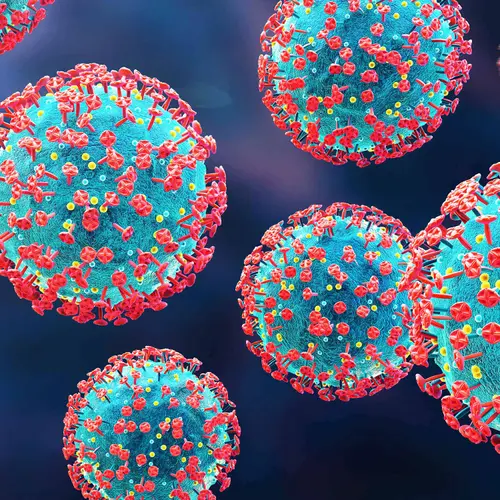The incidence of new human immunodeficiency virus (HIV) and acquired immunodeficiency syndrome (AIDS) diagnoses in the United States have declined more than two-thirds since the height of the pandemic in the 1980s.
While it’s true that HIV/AIDS doesn’t discriminate, race does play a role in infection rates, and Hispanic/Latino communities face high risks.
In the United States, Hispanic/Latino people make up 19.1% of the population but account for 2% of new HIV infections.
In addition to higher rates of infection, Hispanic/Latino communities also face barriers when it comes to receiving diagnosis and treatment, which affects disease outcomes.
The data show that Hispanic/Latino women were three times as likely as non-Hispanic white women to die of HIV infection while death rates from HIV among Hispanic/Latino men were twice as high as non-Hispanic white men.
Understanding the Risks
HIV/AIDS infection rates are highest among African Americans but Hispanic/Latino communities are not far behind. The biggest risks were among men who have sex with men; this group accounted for 69% of all new HIV diagnoses in the U.S. and 22% of new diagnoses in Hispanic/Latino communities, making it the biggest contributor to new HIV infections.
Other risk factors include heterosexual contact, which accounted for 87% of cases in Hispanic/Latino women, and injection drug use.
In some age groups of Hispanic/Latino people, the rates of HIV infections are stable and, in the case of those ages 13 to 24, infections have decreased, but the latest data shows that rates increased 11% among those 55 and older between 2015 and 2019.
Research also shows that birthplace affects risk factors. For those born in Puerto Rico, injection drug use is the biggest risk of HIV infection, while sexual contact between men is the main cause of HIV infection for those born in Mexico and the Hispanic/Latino population in the U.S.
Difficulty With Diagnosis
Although there is no cure for HIV/AIDS, there are screening tools and treatment options to help control HIV; treatment also helps suppress the virus and can make HIV undetectable, reducing the risk of transmitting the virus to others.
Access to HIV testing, prevention, and treatment services is often an issue for those in the Hispanic/Latino population. The language barrier is among one of the biggest barriers to receiving HIV screening with studies showing that Spanish speakers are less apt to get tested if their provider speaks a different language. Limited English skills can also make it harder to understand provider instructions or navigate the health care system.
Stigma has also been blamed as a reason Hispanic/Latino populations don’t use HIV prevention services or seek out screening. One study found that gender and religion were linked to stigmas associated with HIV/AIDS and Spanish-speaking Latino men were more than three times as likely to hold stigmatizing beliefs than women and worried about HIV testing for fear of the reaction from their communities if the test was positive.
There is also an issue of distrust in the health care system among the Hispanic/Latino population that decreases the odds of receiving HIV/AIDS screenings and getting an accurate diagnosis. Among those in Hispanic/Latino communities who are diagnosed with HIV/AIDS, more than 23% are diagnosed at stage 3, which means the HIV virus has progressed to AIDS.
Issues With Treatment Access
In the U.S., just 84% of the Hispanic/Latino population knows their HIV status (compared with 87 % of the general population); the CDC set a goal to increase the percentage of the population who have received an HIV diagnosis and know their status to 95% by 2025.
While knowing your HIV/AIDS status is the first step in seeking treatment, for the 10,200 Hispanic/Latino people diagnosed with HIV/AIDS in the U.S., access to medical care is a major barrier.
Higher levels of poverty among Hispanic/Latino communities makes receiving HIV/AIDS treatment more difficult. The Hispanic/Latino population is among the least likely to have health insurance coverage, making it harder to receive screening and treatment for HIV/AIDS.
Undocumented residents may also be reluctant to use HIV prevention services or seek medical care for HIV/AIDS due to fears that their immigration status will be revealed.
Use of the prescription pre-exposure prophylaxis (PrEP) pill that is available to prevent HIV infections in those who do not currently have or ar at risk of the virus is just 13% among the Hispanic/Latino population compared with 69% among whites.
There have been proposed efforts to address the HIV/AIDS epidemic in Hispanic/Latino communities to reduce rates of infection and provide appropriate treatments. Suggestions to reduce HIV/AIDS infections in Hispanic/Latino communities include stigma reduction, increased access to HIV treatment, language-appropriate services, and other interventions that target Hispanic/Latino residents to reduce their risk.
By addressing the issues that lead to higher rates of infections in Hispanic/Latino communities, it’s possible to reduce HIV/AIDS transmission and help the U.S. federal government achieve its goal of ending HIV transmission nationwide by 2030.

